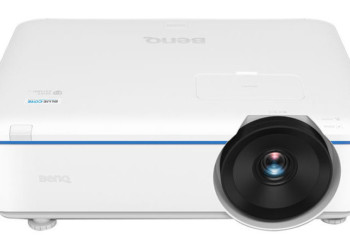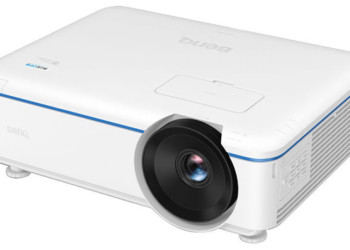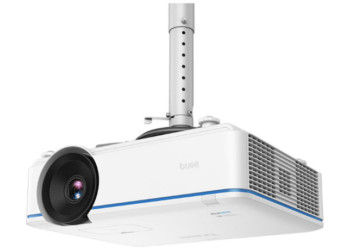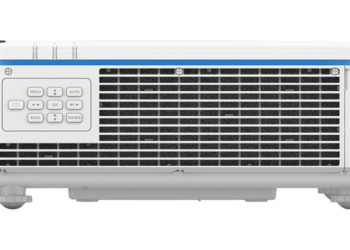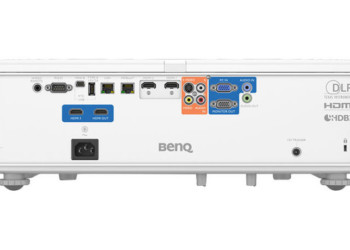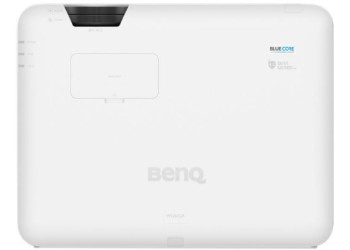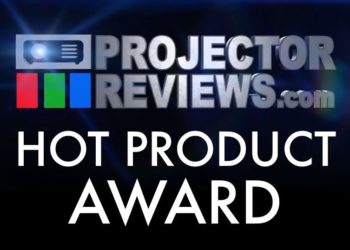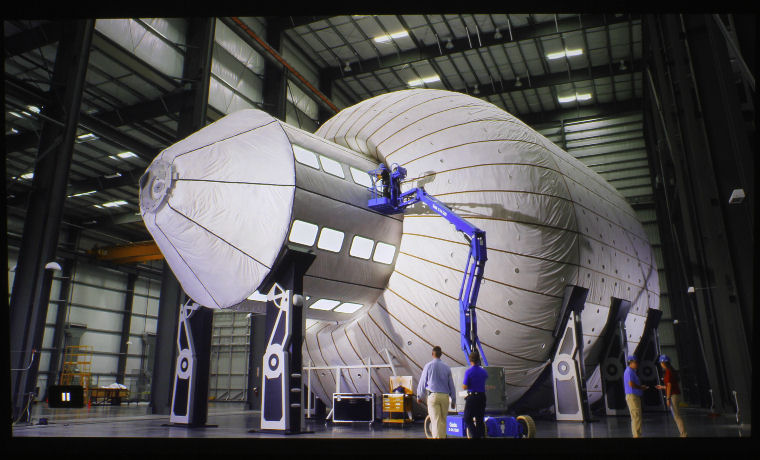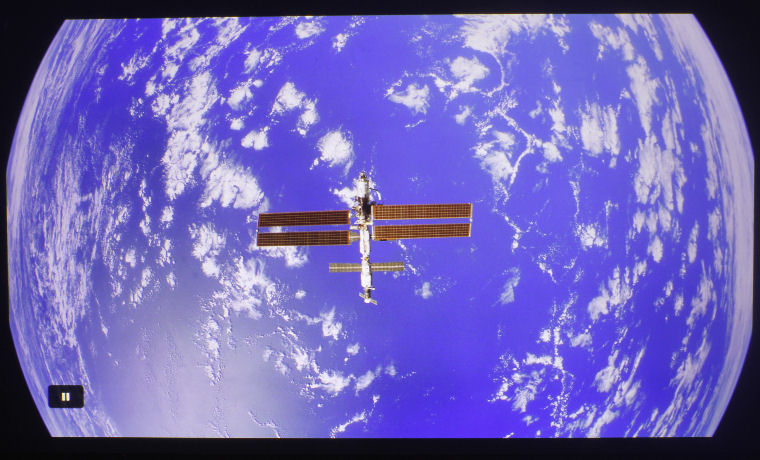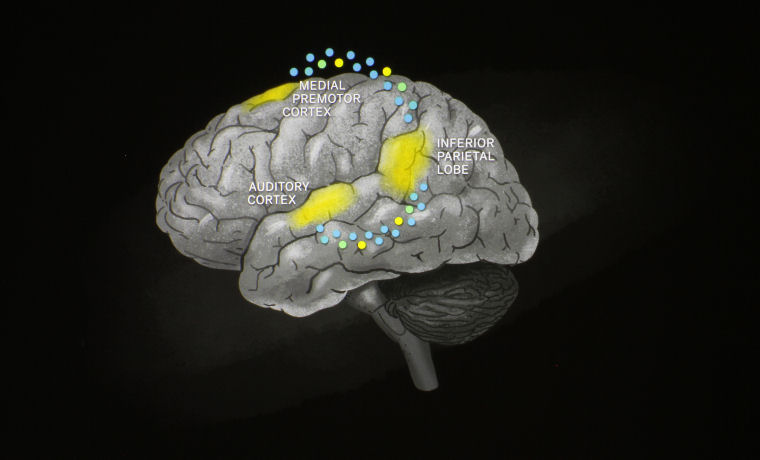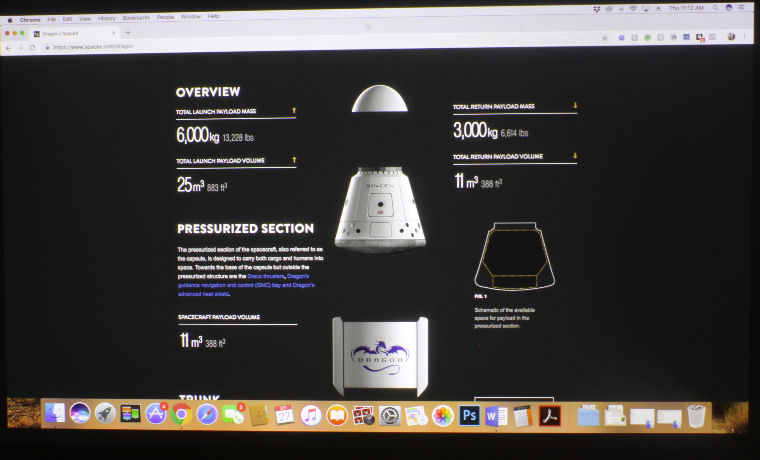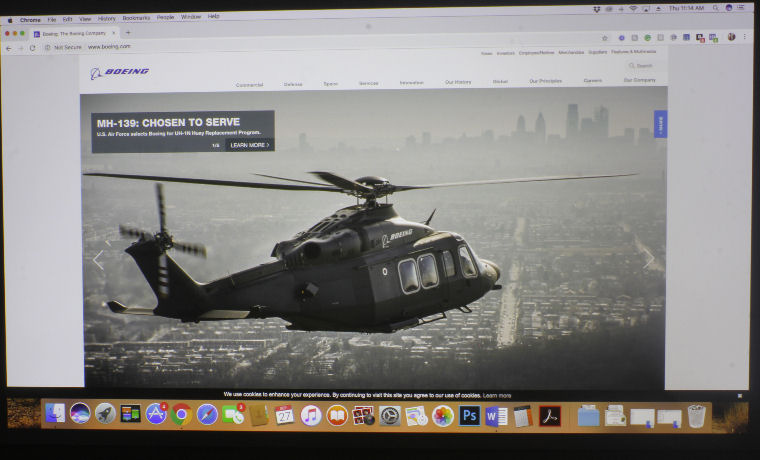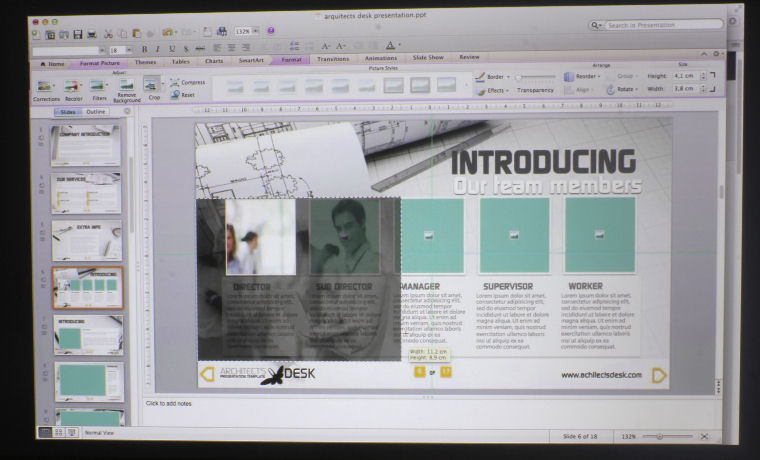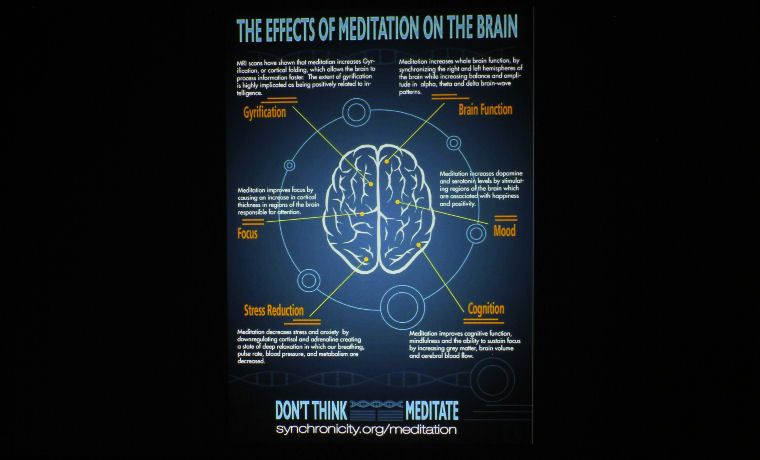The BenQ LU950 is a 5,000 lumen, WUXGA resolution (1920x1200) projector, with a list price of $2,799 – what a great price for a laser projector with WUXGA resolution! That laser light engine has a claim of 20,000 hours, which translates to the projector lasting many years without losing brightness. That’s a major plus for commercial environments where the LU950 may experience heavy use. This BenQ is a DLP projector, so it has a color wheel, but it’s not the one found in most DLPs I’ve reviewed – this one has an RGBY, with a yellow slice.
An RGBY color wheel is not the most usual – typically you’d find an RGBRGB or an RGBW (RGB + clear slice). RGBW color wheels have an advantage over RGBY color wheels, as that clear slice boosts white lumens, making a brighter overall image. Adding a secondary color, such as yellow, gives some of the benefits of an RGBW color wheel, but not as much. The benefit to having an RGBY color wheel is that it gives the manufacturers more opportunity to “get the color right.” Generally speaking, though, the more slices, the less lumens per slice.
The real strengths of DLP are threefold. DLP technology allows for smaller projectors – that’s more portability, and generally lighter-weight projectors, making installation easier. In situations with ambient light, you’ll get more white lumens dollar-for-dollar than a 3LCD projector, but a 3LCD projector will perform better than DLPs in terms of color, when faced with ambient light. So, "all else being equal," when you need good color in the face of ambient light, you’ll want a 3LCD, DLP if you want more brightness and don’t need as good of color – like we say, there are always trade-offs. In controlled conditions, both technologies perform well.
Bu all else isn't equal. Typically DLP projectors deliver more white lumens per dollar - a similarly featured DLP might offer 5000 lumens while the competing 3LCD selling for the same price might only offer 4000 lumens. When you factor that in, then you realize that a good DLP projector like this one (which costs less than 3LCD competition), can not only deliver a good deal more white lumens, but may well have similar good quality color lumen output.
These are all things we consider in our reviews. And with that, we concluded that the LU950 is an impressive laser projector that earns one of our Hot Product Awards.
DLP projectors also have sealed light paths. This means that no dust particles will settle on the inside of the light path and cause a “dust blob” on your projected image. This is a big plus because having to get that dust removed is a major maintenance call, costing time and money. With a sealed light path, you get protection of the DMD chip, color wheel sensor, laser bank, and other optical components. 3LCD manufacturers are starting to seal their light paths as well, though they do it in a different way.

